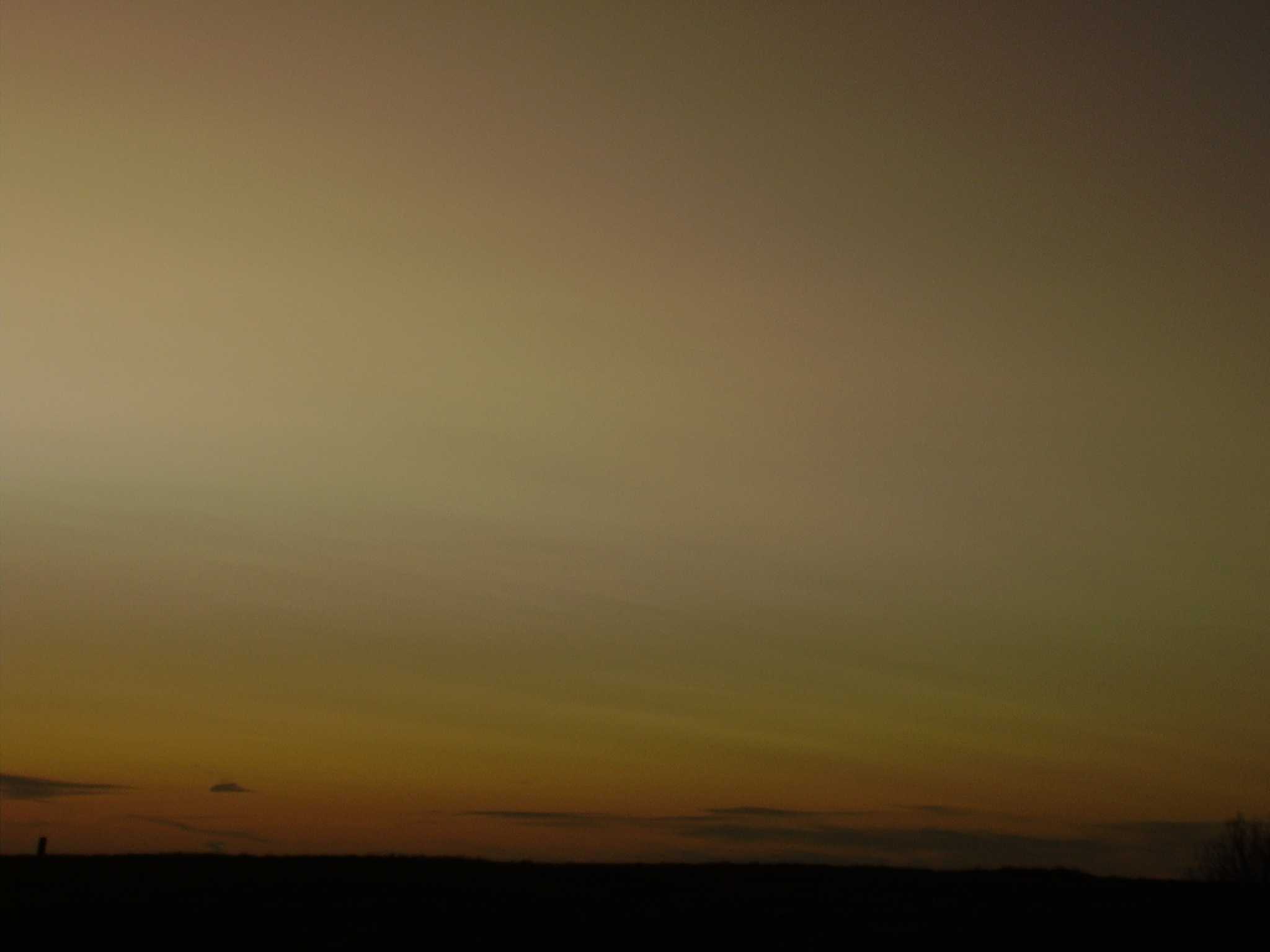Nitric acid and water polar stratospheric clouds
(Section 2.6.2)Definition
Stratospheric clouds with smaller and less numerous particles than an ice polar stratospheric cloud, and which exist at temperatures up to 6 °C above the ice point and contain solid hydrates or liquid solution droplets of nitric acid and water.
Physical constitution
Polar stratospheric clouds composed of water and nitric acid may appear at temperatures below about −78 °C. These clouds contain two types of particles from the co-condensation of nitric acid and water. The particles that can exist at −78 °C are nitric acid trihydrate particles, where each molecule of nitric acid is connected with three molecules of water; however, similar to supercooled tropospheric clouds, nitric acid trihydrate may not form at −78 °C due to a nucleation barrier. At 3 °C below the nitric acid trihydrate temperature, nitric acid and water co-condense on stratospheric sulfuric acid aerosols to form liquid particles supercooled with respect to nitric acid trihydrate, thus forming supercooled ternary solution droplets. There is no nucleation barrier to the formation of supercooled ternary solution droplets.
The size of the nitric acid trihydrate particles is of the order of 1−10 μm diameter, but with a very low number density. The number density of supercooled ternary solution particles is much higher, but sizes are typically less than 1 μm. Owing to the small particle size of the supercooled ternary solution particles and the low number density of the nitric acid trihydrate particles, these polar stratospheric clouds are much harder to observe by eye and do not display the bright colours of ice polar stratospheric clouds. Various type categorizations of these clouds in the past reflect differences in the mixtures of nitric acid trihydrate and supercooled ternary solution as measured by lidar, but in fact, these mixtures of particle types form a large continuum.
Ice, nitric acid trihydrate and supercooled ternary solution polar stratospheric clouds are all linked to the destruction of polar stratospheric ozone and the formation of the “ozone hole”. They provide surfaces to convert benign forms of chlorine into more reactive forms that catalytically destroy ozone. In addition, the formation of the clouds removes gaseous nitric acid from the stratosphere, which could otherwise interrupt ozone loss by reforming benign forms of chlorine.
Explanatory remarks
Polar stratospheric clouds occur only in high-latitude regions during the winter, or near winter, when temperatures in the lower and middle stratosphere fall below about −78 °C for nitric acid trihydrate, −81 °C for supercooled ternary solution polar stratospheric clouds and −85 °C for ice polar stratospheric clouds. They are best viewed before sunrise and after sunset during the period of civil twilight when the Sun is between about 1° and 6° below the horizon.
Nitric acid trihydrate and supercooled ternary solution polar stratospheric clouds are more diffuse and do not display the bright colours of nacreous cloud. Nitric acid and water polar stratospheric clouds may appear as a thin yellowish veil over much of the sky. This may be confused with either Cirrostratus clouds or a layer of haze, but fine horizontal structure may be visible near the horizon, and if they are in the stratosphere, they can be viewed well after sunset.




